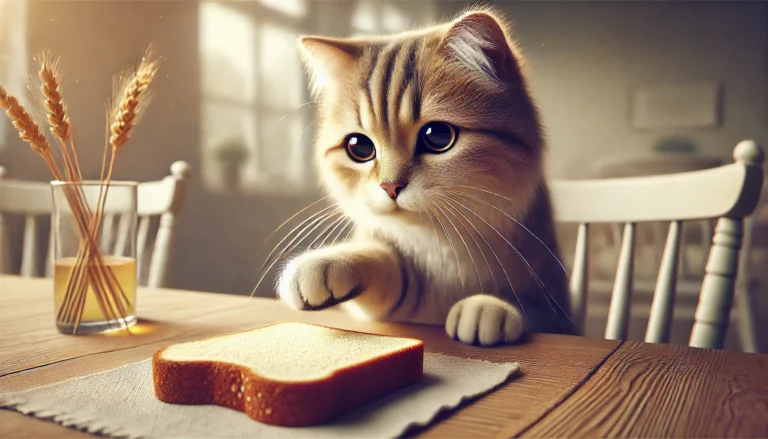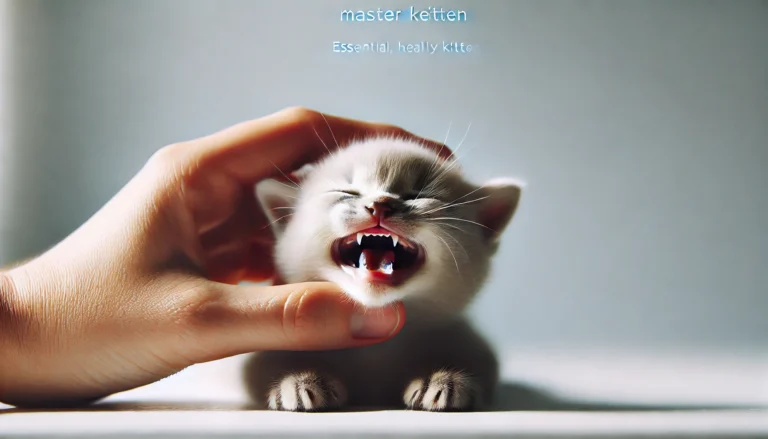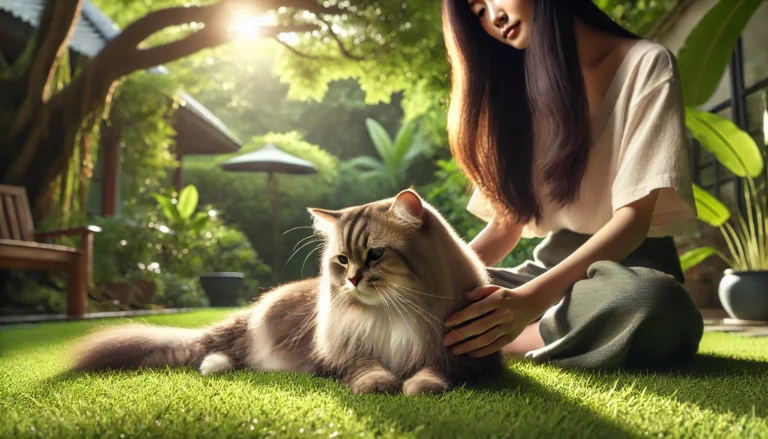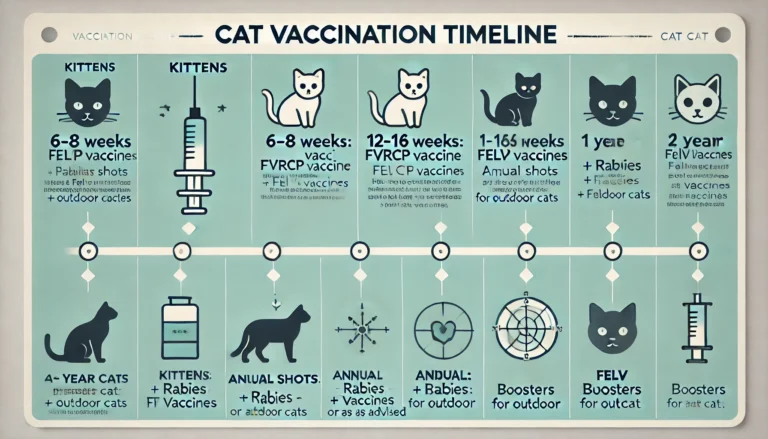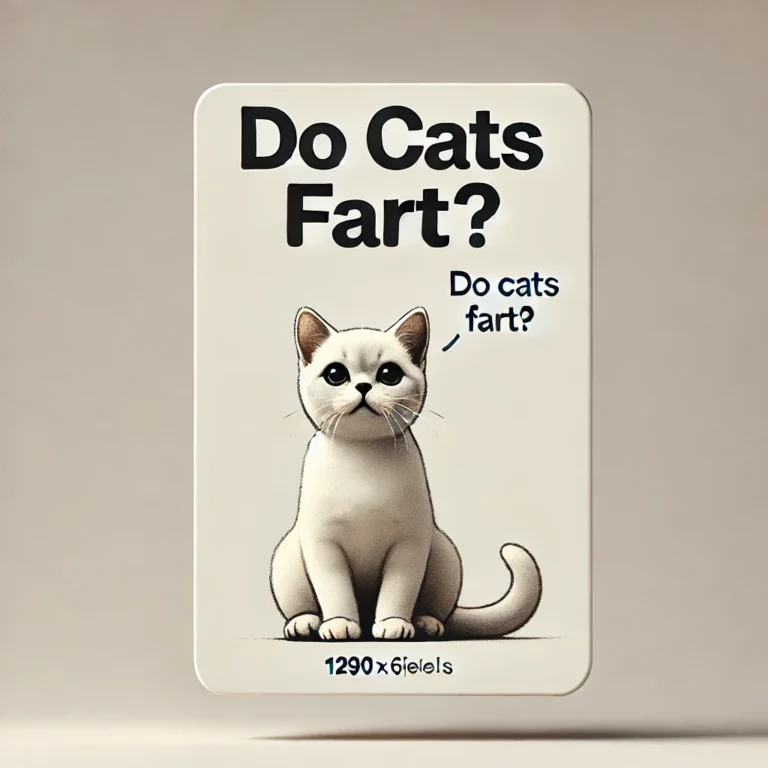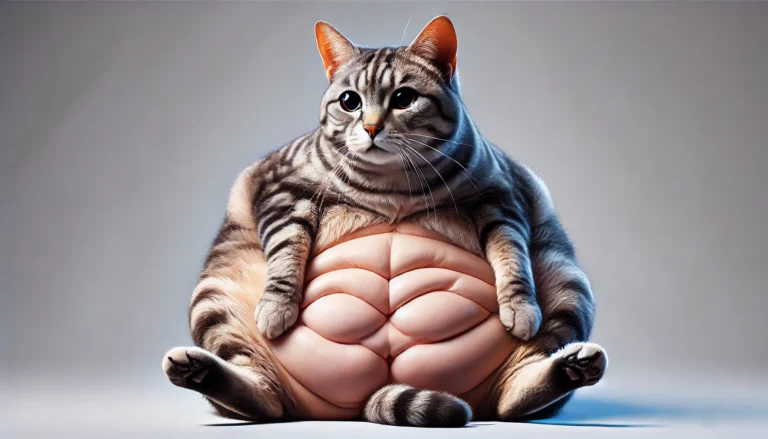Can Cats Eat Potatoes?
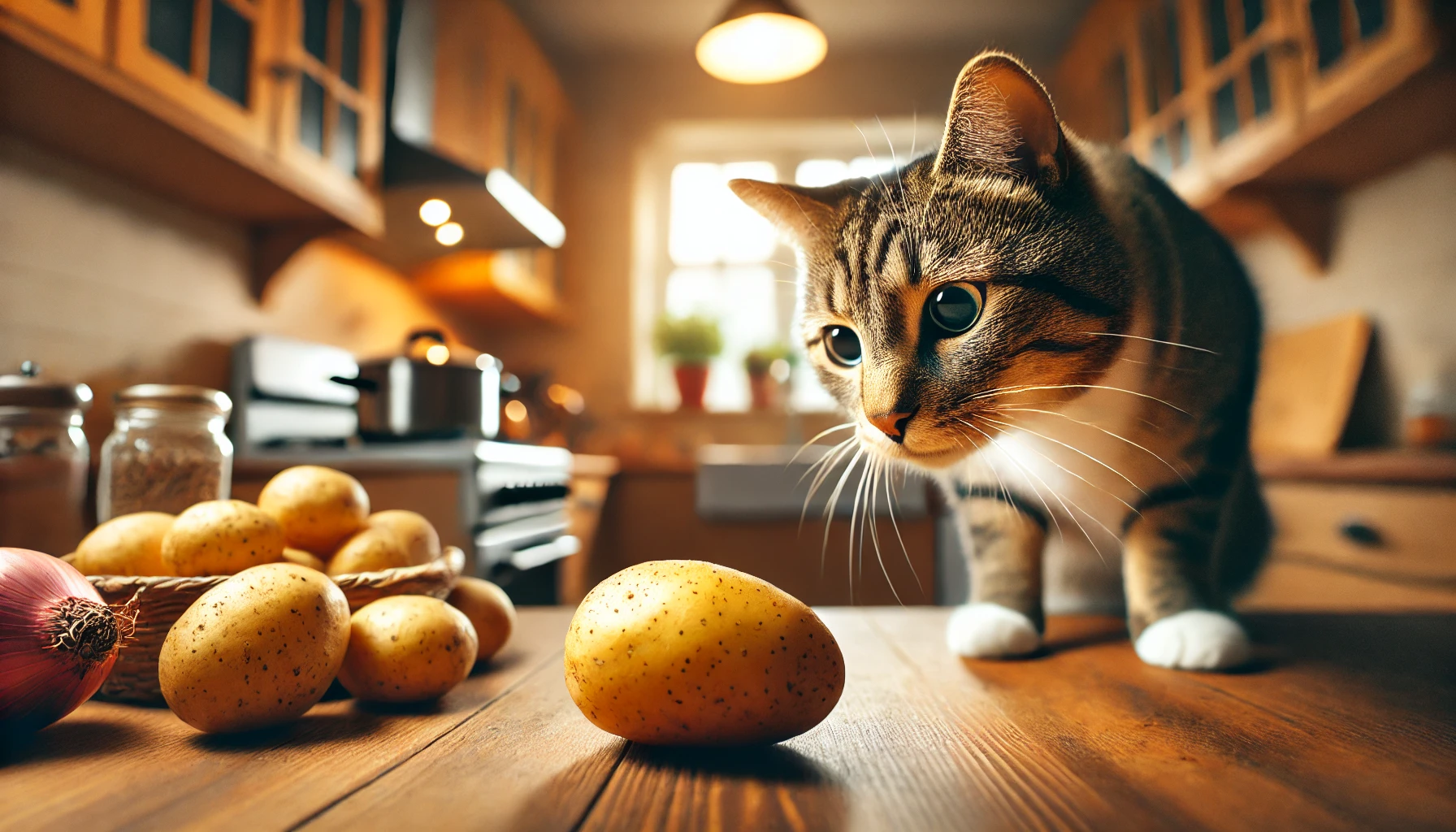
Cats Eat Potatoes
Can Cats Eat Potatoes?Yes, cats can eat potatoes, but only if they are cooked without seasonings, fats, or salts, and the skin has been removed.Potatoes are a good source of vitamins, including vitamin C, and can be a great addition to pet food. However, cats are meat eaters and need protein from meat for a healthy reproductive system, good vision, and a strong heart. Some foods that are good for cats
Understanding Feline Nutrition
When it comes to feeding cats, it’s crucial to grasp the fundamental aspects of feline nutrition. Cats are obligate carnivores, meaning their bodies are finely tuned to derive nutrients from animal-based sources. This section delves into the unique dietary needs of cats, highlighting why certain human foods, like cats eat potatoes, may not align well with their natural dietary requirements.
The Carnivorous Nature of Cats
Cats have evolved as hunters that consume prey high in protein, moderate in fat, and minimal in carbohydrates. Their digestive system is adapted to efficiently process meat, relying on it for essential nutrients:
- Protein: Cats require a high level of high-quality protein for muscle maintenance, repair, and overall body function. Unlike some animals, cats use protein as their primary energy source.
- Taurine: An essential amino acid found only in animal tissue, taurine is crucial for heart health, vision, and reproductive capabilities. Cats cannot synthesize enough taurine themselves and must obtain it from their diet.
- Vitamins and Minerals: While cats can synthesize some vitamins, they need direct sources of others, such as vitamin A (which they must derive from animal sources) and B vitamins.
Limited Carbohydrate Tolerance
Cats lack significant amounts of certain enzymes necessary for the digestion of carbohydrates. Their natural prey contains very little carbohydrates, so their evolutionary adaptation leans heavily towards protein and fat metabolism. This limited carbohydrate tolerance is a key factor in understanding why feeding cats high-carbohydrate foods like cats eat potatoesmay not be ideal:
- Digestive System: The feline digestive tract is short and lacks complexity, which means high-carbohydrate diets are harder for them to digest and can lead to obesity and diabetes.
- Dietary Requirements: The natural diet of cats does not include any significant amount of carbohydrates. Research suggests that cats do not have a dietary requirement for carbohydrates as long as sufficient protein is provided.
Risks of Feeding Human Foods
While it’s tempting to share our meals with our feline friends, many human foods can pose health risks to cats. Foods that are safe for humans, such as onions and garlic, can be toxic to cats. Even non-toxic foods can disrupt the delicate balance of their dietary needs:
- Obesity and Diabetes: High-calorie foods that are not part of a cat’s natural diet can lead to weight gain and associated diseases.
- Nutritional Imbalances: Feeding foods like cats eat potatoes can lead to excess carbohydrates, which not only provide little nutritional value but also displace other essential nutrients in the diet.
Potatoes: Types and Nutritional Content
Potatoes are a staple food in many parts of the world, known for their versatility and nutritional benefits in human diets. However, when considering incorporating cats eat potatoes into a cat’s diet, it’s important to understand the different types of potatoes and their respective nutritional profiles. This knowledge can help cat owners make informed decisions about what, if any, type of potato might be occasionally suitable for their pets.
Types of Potatoes
Potatoes come in various types, each with unique characteristics and nutritional values. Here are some common varieties:
- White Potatoes: These are the most commonly consumed type. They are high in carbohydrates and provide vitamins such as Vitamin C and B6, and minerals like potassium and magnesium.
- Red Potatoes: Similar in nutritional content to white potatoes but often considered slightly healthier due to their lower glycemic index and higher vitamin K content.
- Sweet Potatoes: Though technically not the same species as other potatoes, sweet potatoes are higher in fiber and vitamins A and C. They are often considered a healthier option due to their antioxidant properties.
- Russet Potatoes: Known for their starchy content, making them ideal for baking and mashing. They are high in fiber and protein compared to other potato types.
Nutritional Content and Considerations
Understanding the nutritional breakdown of cats eat potatoes helps in assessing their potential impact on a cat’s health:
- Carbohydrates: Potatoes are primarily composed of carbohydrates, including starch. A medium potato can contain about 37 grams of carbs, which is substantial for a cat’s diet.
- Proteins: Potatoes provide a small amount of protein, but it is not a complete protein source as it lacks certain essential amino acids necessary for cats.
- Fibers: Potatoes contain dietary fibers, which can aid in digestion. However, cats do not require a high-fiber diet.
- Vitamins and Minerals: Potatoes are a good source of Vitamin C, Vitamin B6, and potassium. However, cats synthesize their Vitamin C and require different types of B vitamins found predominantly in meat.
Potential Benefits and Risks for Cats
While potatoes are nutritious for humans, their benefits for cats are limited:
- Benefits: The fiber in potatoes may help cats with certain digestive issues, but only under specific circumstances and upon a veterinarian’s advice.
- Risks: The high carbohydrate content in potatoes can lead to obesity and diabetes in cats. Additionally, raw potatoes contain solanine, a compound that can be toxic to cats.
Health Implications of Potatoes for Cats
While cats eat potatoes are a common and nutritious staple in human diets, their impact on feline health can vary significantly. Understanding the potential health implications—both positive and negative—of feeding potatoes to cats is crucial for pet owners who wish to make informed dietary choices for their furry companions.
Potential Nutritional Benefits
While not a natural part of a cat’s diet, cats eat potatoes can offer certain nutrients that may have marginal benefits:
- Dietary Fiber: Potatoes contain dietary fiber, which can help manage cat’s bowel movements, especially in cases of certain digestive disorders where fiber may be recommended by a veterinarian.
- Vitamins: Potatoes are a source of vitamins such as Vitamin B6 and Vitamin C. While cats can produce Vitamin C on their own, B vitamins are essential and must be a part of their diet, though they are typically obtained sufficiently through meat.
- Minerals: Potatoes also provide minerals like potassium, which can support heart health and other bodily functions in cats.
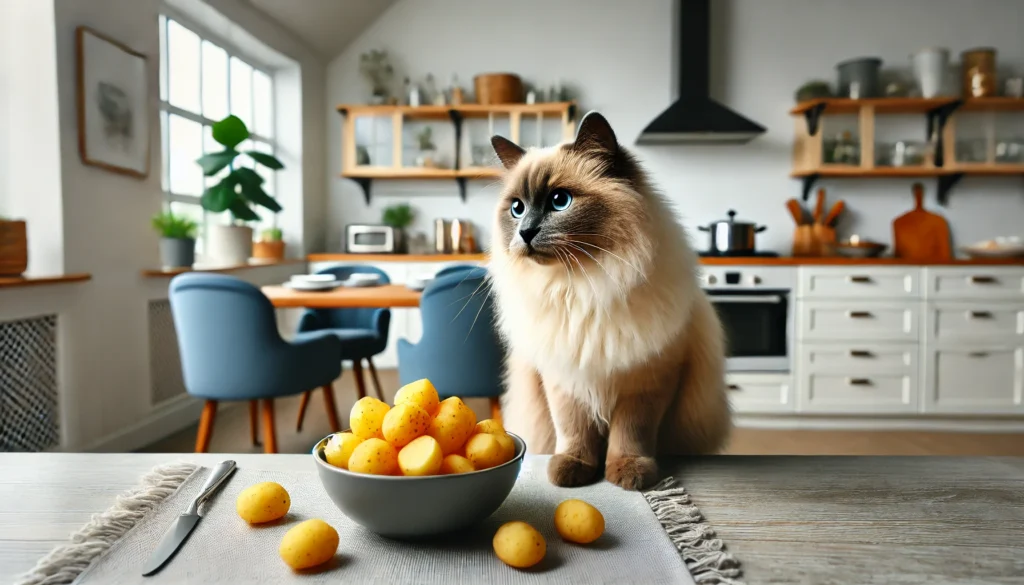
Risks and Adverse Effects
Despite these potential benefits, the risks often outweigh them:
- High Carbohydrate Content: Cats are obligate carnivores, which means their diets require predominantly protein and very little carbohydrates. The high starch content in cats eat potatoes can lead to obesity and diabetes if fed inappropriately.
- Solanine Toxicity: Raw potatoes, especially green ones, contain solanine, a toxin that can be harmful to cats. Solanine can cause gastrointestinal distress, lethargy, and more severe symptoms in higher doses.
- Digestive Issues: Some cats may have difficulty digesting cooked potatoes, leading to gastrointestinal upset, including diarrhea and vomiting.
Allergic Reactions
While not common, some cats might be allergic to potatoes. Symptoms of a food allergy can include:
- Itching and Skin Irritations: Manifesting as excessive grooming or scratching.
- Gastrointestinal Symptoms: Such as vomiting or diarrhea shortly after consuming potatoes.
Diagnosis of Potato-Related Health Issues
If a cat owner suspects their pet is having an adverse reaction tocats eat potatoes, it is important to consult with a veterinarian. Diagnosis may involve:
- Dietary Elimination: Removing potatoes from the diet to see if symptoms improve.
- Clinical Examination: A thorough physical check-up to rule out other health issues.
- Allergy Testing: If a food allergy is suspected, specific tests might be conducted to confirm sensitivity to potatoes.
Treatment and Management
Treatment for adverse reactions to cats eat potatoes depends on the symptoms and their severity:
- Elimination of Potatoes: The simplest treatment is to stop feeding the cat potatoes altogether.
- Symptomatic Treatment: For symptoms like vomiting or diarrhea, veterinarians might prescribe medications to ease these symptoms.
- Dietary Adjustments: For cats that can tolerate small amounts, ensuring cats eat potatoes are cooked without any added seasonings like salt or onions, which are toxic to cats, is crucial.
Preventative Measures
The best approach to prevent any health issues related to cats eat potatoes is cautious management:
- Avoidance of Raw Potatoes: Always ensure that any potatoes fed to cats are cooked and free from green spots.
- Moderation: If included in the diet, potatoes should be offered sparingly and not as a primary food source.
- Monitoring: Observe the cat’s response to potatoes and consult a vet if any health issues arise.
Clinical Signs and Diagnosis of Potato Toxicity in Cats
Feeding cats foods that are not part of their natural diet can sometimes lead to adverse health effects. Potato toxicity in cats is a concern due to the presence of solanine in raw and green potatoes. Understanding the clinical signs and the diagnostic process is crucial for cat owners to manage and prevent potential health risks effectively.
Clinical Signs of Potato Toxicity
When a cat ingests toxic amounts of solanine from potatoes, several symptoms may occur, indicating poisoning:
- Gastrointestinal Distress: This is often the first sign of solanine poisoning and may include vomiting, diarrhea, and severe abdominal pain.
- Neurological Symptoms: Solanine can affect the nervous system, leading to symptoms such as confusion, behavioral changes, weakness, and ataxia (loss of coordination).
- Respiratory Problems: In severe cases, solanine poisoning can lead to respiratory difficulties, which may manifest as shortness of breath or rapid, labored breathing.
- Physical Weakness and Lethargy: Cats may exhibit decreased energy levels, weakness, or even collapse if the toxicity is high.
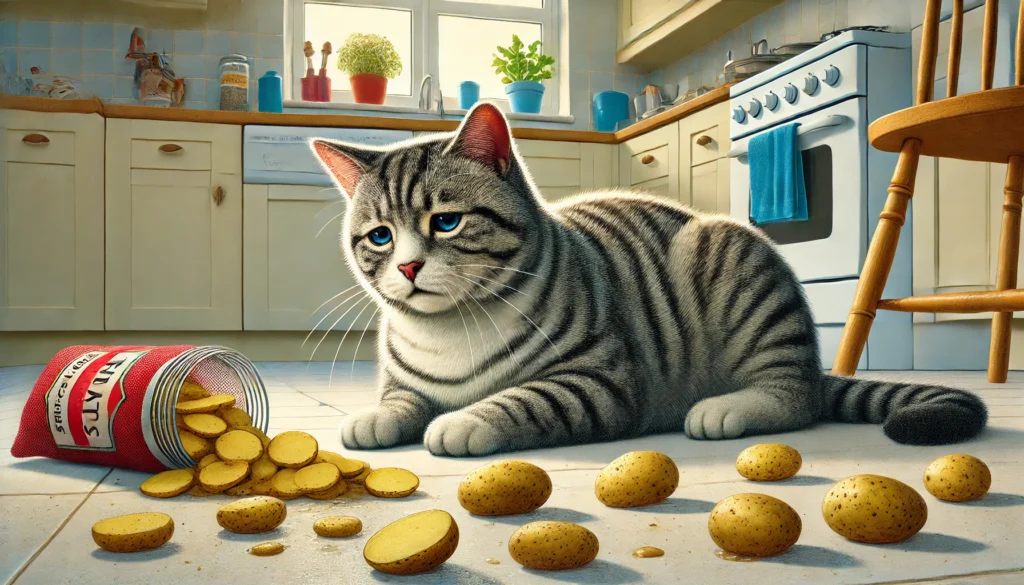
Diagnosis cats eat potatoes
Diagnosing potato toxicity involves a combination of clinical examination, history taking, and sometimes specific diagnostic tests:
- Veterinary Examination: A thorough physical exam by a veterinarian is essential to assess the cat’s overall health and identify any signs of poisoning.
- Dietary History: The vet will need a complete dietary history to identify the likelihood of potato ingestion. Details about what and how much the cat ate, along with the onset of symptoms, are crucial.
- Blood Tests: These can help assess the overall health of the cat and may indicate specific organ functions that could be affected by toxins.
- Urinalysis: This test can help further evaluate kidney function and detect any abnormalities that might be related to poisoning.
- Specific Tests for Solanine: While there are no routine tests specifically for detecting solanine, the diagnosis is often made based on symptoms and dietary history.
Treatment and Management of Potato Toxicity
Immediate and effective treatment is crucial for managing solanine poisoning in cats:
- Decontamination: If the ingestion was recent, the vet might induce vomiting to reduce the amount of toxin absorbed. Activated charcoal may also be administered to bind any remaining toxins in the gastrointestinal tract.
- Supportive Care: Depending on the symptoms, supportive care can include IV fluids for dehydration, medications to control vomiting and diarrhea, and pain relief.
- Monitoring and Observation: Continuous monitoring in a veterinary hospital might be necessary to manage potential complications, especially if the nervous system is affected.
- Dietary Management: Once the cat is stable, a bland diet may be recommended to allow the gastrointestinal system to recover.
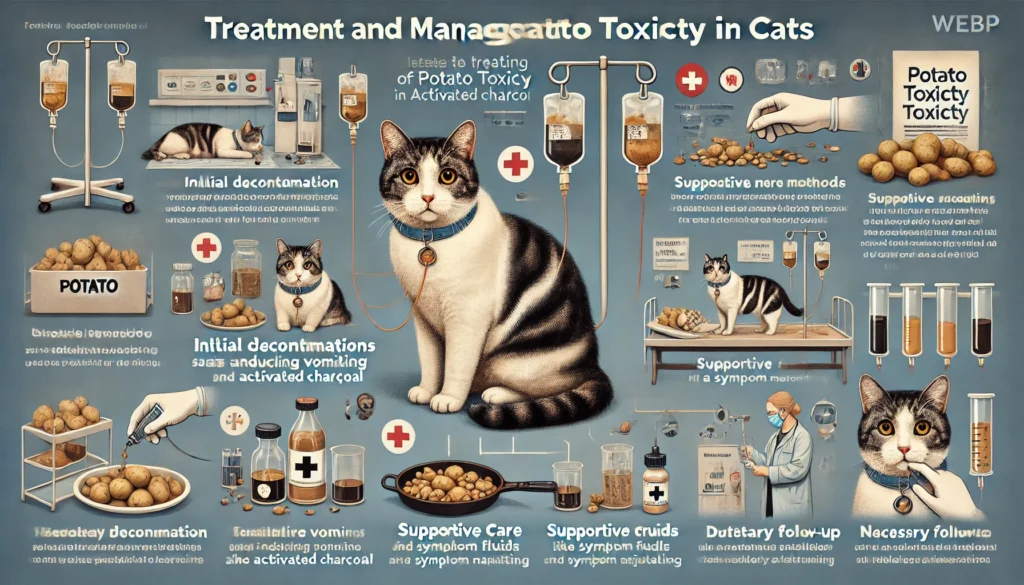
Preventative Measures
Prevention is always better than cure, especially when it comes to dietary toxins:
- Education on Safe Feeding Practices: Cat owners should be educated about which foods are safe to feed their pets and the dangers of feeding potentially toxic foods like raw or green potatoes.
- Regular Veterinary Check-ups: Routine health checks can help ensure that cats are not exposed to harmful foods and are eating a diet appropriate for their specific health needs.
- Immediate Veterinary Care: If a cat owner suspects their pet has eaten something toxic, immediate veterinary care can make a significant difference in the outcome.
Treatment Protocols for Potato-Related Issues in Cats
When a cat experiences health issues due to consuming potatoes, whether due to solanine toxicity or dietary intolerance, specific treatment protocols are necessary to manage and resolve the symptoms. Prompt and effective treatment not only alleviates discomfort but also prevents potential complications. This section outlines the standard approaches to treating potato-related issues in cats, including immediate care and long-term management strategies.
Immediate Treatment for Potato Toxicity
Immediate treatment focuses on stabilizing the cat and preventing further absorption of toxins:
- Inducing Vomiting: If the ingestion of raw or green potatoes is recent, a veterinarian might induce vomiting to expel the cats eat potatoes from the stomach. This procedure is typically performed under veterinary supervision to ensure safety and effectiveness.
- Activated Charcoal: Administering activated charcoal can help absorb any remaining toxins in the gastrointestinal tract, reducing further absorption into the bloodstream.
- Supportive Care: Supportive care includes intravenous fluids to correct dehydration and electrolyte imbalances. This support is crucial for maintaining organ function and aiding recovery.
- Medication: Depending on the symptoms, medications may be administered to manage pain, control vomiting, reduce inflammation, and address any neurological symptoms.
Managing Dietary Intolerance to cats eat potatoes
If a cat shows signs of dietary intolerance to potatoes (e.g., gastrointestinal upset without the presence of solanine toxicity), the treatment involves dietary management:
- Dietary Elimination: The first step is to eliminate potatoes from the cat’s diet completely. This helps to clear any symptoms associated with the intolerance.
- Dietary Reintroduction: If potatoes are to be reintroduced, it should be done gradually and under veterinary supervision to monitor for adverse reactions.
- Alternative Diets: Vets might recommend alternative dietary options that are more suitable for the cat’s digestive system and nutritional needs, avoiding high-carbohydrate foods.
Title
Cats Eat Tuna many owners have noticed their pets’ fondness for tuna. This article explores the appeal of tuna to cats, highlighting the nutritional benefits and potential risks, offering guidance on responsible feeding practices, and suggesting alternative fish options. We will delve into why this particular fish attracts cats and how to manage its inclusion in their diet safely and effectively
Long-term Management and Monitoring
For cats that have recovered from an acute episode of potato toxicity or intolerance, long-term management focuses on preventing recurrence:
- Regular Veterinary Check-ups: Routine check-ups can help monitor the cat’s overall health and ensure there are no lasting effects from the potato ingestion.
- Educating Owners: Owners should be educated on the potential risks of feeding human foods, including cats eat potatoes. Understanding what is safe and what could be harmful is crucial for preventing future issues.
- Maintaining a Balanced Diet: Ensuring the cat’s diet is well-balanced with appropriate levels of protein, fats, and minimal non-toxic carbohydrates is essential for overall health.
Prevention of Potato-Related Issues
Prevention is always preferable to treatment. Here are some key strategies to prevent potato-related issues in cats:
- Avoidance of High-Risk Foods: Avoid feeding raw, green, or highly processed cats eat potatoes to cats. Cooked potatoes should only be offered occasionally and in small quantities if at all.
- Awareness of Symptoms: Cat owners should be aware of the early signs of both solanine poisoning and dietary intolerance, such as vomiting, diarrhea, lethargy, and unusual behavior.
- Consultation Before Diet Changes: Always consult a veterinarian before introducing any new food into a cat’s diet, especially human foods that might not align with feline dietary needs.
Preventive Measures for Feeding cats eat potatoes
Given the potential risks associated with feeding cats eat potatoes to cats, it’s essential to take proactive preventive measures. These measures help ensure that cats remain healthy and are not exposed to unnecessary risks from foods that do not align with their dietary needs as obligate carnivores.
Understanding Feline Dietary Needs
Before introducing any human food, including potatoes, into a cat’s diet, it’s crucial to understand the specific dietary requirements of cats:
- Carnivorous Diet: Cats require a diet high in protein from animal sources. Their digestive system is not designed to process high amounts of carbohydrates effectively.
- Essential Nutrients: Cats need certain amino acids and vitamins that are primarily found in meat, such as taurine and vitamin A, which are not present in sufficient quantities in plant-based foods.
Safe Introduction of Potatoes
Ifcats eat potatoes are to be introduced to a cat’s diet:
- Veterinary Consultation: Always consult with a veterinarian before adding potatoes or any new food to your cat’s diet. They can provide guidance based on the individual health needs of your cat.
- Proper Preparation: Ensure that potatoes are cooked without any added ingredients such as salt, onion, garlic, or spices that can be toxic to cats. Raw potatoes should be avoided entirely to prevent solanine poisoning.
- Small Quantities: If approved by a veterinarian, introduce potatoes in small amounts. Monitor your cat’s reaction to the new food and discontinue immediately if any adverse effects occur.
Regular Monitoring and Observation
Regularly monitor your cat’s health and dietary response:
- Watch for Adverse Reactions: Look for signs of digestive distress, such as vomiting, diarrhea, or changes in appetite, which might indicate intolerance or an allergic reaction.
- Behavioral Changes: Observe your cat for any changes in behavior or activity levels after consuming potatoes. Lethargy or unusual restlessness could indicate discomfort or a negative reaction.
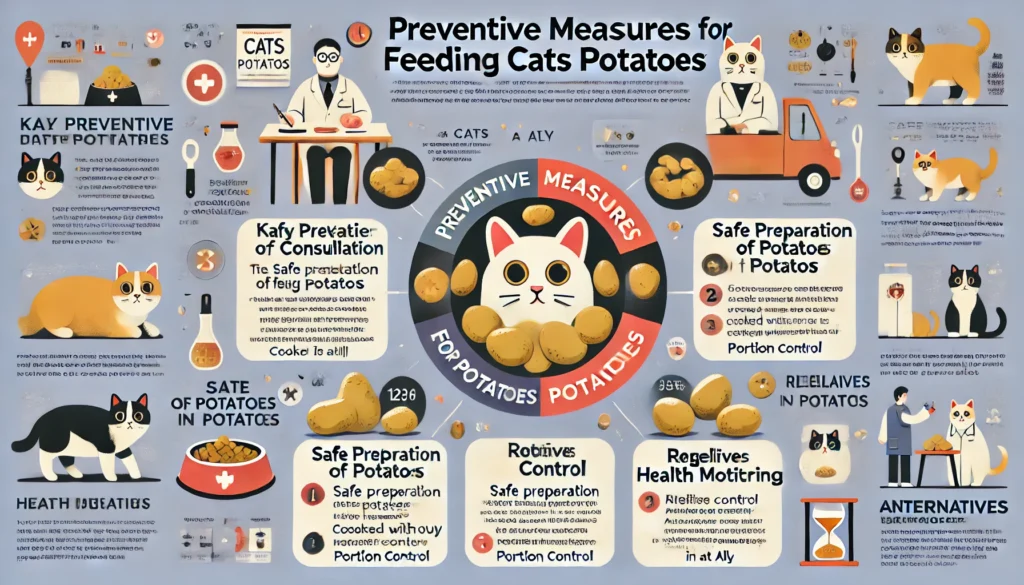
Educating Cat Owners
Education plays a crucial role in preventing dietary mishaps:
- Dietary Risks: Inform cat owners about the risks associated with feeding human foods to cats, emphasizing the importance of adhering to a diet that meets feline-specific nutritional requirements.
- Toxic Foods: Raise awareness about foods that are toxic to cats and ensure that owners understand the symptoms of food toxicity and the steps to take if their cat is affected.
Alternatives to Potatoes
Provide cats with safer and more suitable dietary options:
- Commercial Cat Foods: Opt for high-quality commercial cat foods that are formulated to meet all the nutritional needs of cats, which help prevent the temptation to supplement with human foods.
- Healthy Treats: Offer treats made specifically for cats instead of human food. These treats are designed to be both safe and appealing to cats.
Creating a Balanced Diet
Ensure that your cat’s overall diet is balanced and nutritious:
- Professional Guidance: Work with a veterinarian to develop a feeding plan that includes all the necessary nutrients for your cat’s health and well-being.
- Avoid Unnecessary Additions: Steer clear of adding non-essential items like cats eat potatoes to your cat’s diet unless specifically recommended by your vet for medical reasons.
Conclusion
Understanding the implications of feeding potatoes to cats is essential for every responsible cat owner. Whilecats eat potatoes are a nutritious staple for humans, they do not offer the same benefits for cats and can pose health risks due to their high carbohydrate content and potential toxicity. The key takeaway is that cats, as obligate carnivores, have specific dietary needs that are best met with high-quality commercial cat food designed for their unique nutritional requirements.Feeding cats potatoes should be approached with caution, and any inclusion of this food in a cat’s diet should always be under the guidance of a veterinarian. Opting for cat-specific treats and strictly following dietary recommendations helps ensure that your cat remains healthy and avoids the unnecessary risks associated with inappropriate human foods. Ultimately, the health and well-being of our feline companions should always be the priority, underscoring the importance of making informed, careful decisions about their diet.
Is It Okay for Cats to cats eat potatoes?
cats eat potatoes, but they should do so in moderation and under specific conditions. Potatoes must be cooked thoroughly to break down the starches and eliminate solanine, a toxic compound found in raw potatoes. It’s crucial to avoid adding any salt, spices, or other harmful ingredients such as onion or garlic. While potatoes aren’t toxic to cats when prepared properly, they offer minimal nutritional benefit to them as obligate carnivores. Therefore, potatoes should only be a small part of a cat’s diet, primarily used as an occasional treat rather than a regular meal component.
Why Do Cats Love Potatoes?
Cats may show interest incats eat potatoes due to their texture or the smell of butter and other seasonings often associated with them, rather than the potatoes themselves. Cats are curious creatures and often explore new things, including various foods. Some cats might nibble on potatoes due to the presence of fatty or salty flavors, especially if the potatoes are prepared with additives that appeal to their sense of smell. However, this doesn’t mean potatoes are particularly good for cats. Owners should be cautious about feeding cats potatoes, especially if they contain seasonings or additives.
What Is a Cat’s Favorite Food?
A cat’s favorite food typically includes meats that provide the high protein content necessary for their diet. Cats generally prefer flavors like chicken, turkey, fish, and beef, which are commonly found in commercial cat foods. These foods are appealing to cats not only because of their taste but also because they meet the nutritional requirements essential for their health. High-quality commercial cat foods that mimic the protein and fat composition of a cat’s natural prey tend to be favorites among felines.
Is Potato Starch OK in Cat Food?
cats eat potatoes potato starch is often used in cat food as a carbohydrate source and binding agent. While not particularly nutritious for cats, potato starch is generally considered safe in small quantities. It can help in forming kibble and providing texture. However, cats do not require a high carbohydrate diet, so the inclusion of potato starch should be minimal. It’s important for cat food formulations to focus primarily on high-quality protein sources, with carbohydrates like potato starch playing a much smaller role.
Are Cats Allergic to Cooked Potatoes?
Cats are not commonly allergic to cooked potatoes, but it is possible. Allergies in cats can manifest as skin irritations, gastrointestinal upset, or respiratory difficulties. If a cat shows signs of an allergic reaction after consuming cooked potatoes, such as itching, red skin, vomiting, or diarrhea, it may be allergic to this food. It is important to consult a veterinarian if you suspect your cat has a food allergy to properly diagnose and manage the condition.
What Shouldn’t Be in Cat Food?
Cat food should not contain onions, garlic, or any members of the onion family as they are toxic to cats. It should also avoid chocolate, caffeine, alcohol, and excessive salt and sugar. Additionally, artificial preservatives like BHA, BHT, and ethoxyquin should be avoided due to potential health risks. High carbohydrate content, such as from grains or unnecessary fillers, should also be minimized to better align with a cat’s natural dietary needs.
What Is the Safest Thing to Feed Cats?
The safest and most nutritious food to feed cats is a high-quality commercial cat food that meets AAFCO (Association of American Feed Control Officials) guidelines. These foods are specifically formulated to meet all of a cat’s dietary needs, including the right balance of protein, fats, and essential nutrients. For those who prefer homemade diets, it’s crucial to consult with a veterinarian or a pet nutritionist to ensure the diet is balanced and meets all of your cat’s nutritional needs.
Is Rice Bad for Cats?
Rice is not inherently bad for cats and can be a part of their diet in small amounts. It is often used as a carbohydrate source in commercial cat foods and can be helpful for cats with digestive issues as it is easy to digest and low in fiber. However, rice should not make up a large portion of a cat’s diet, as cats require primarily protein-rich foods.

